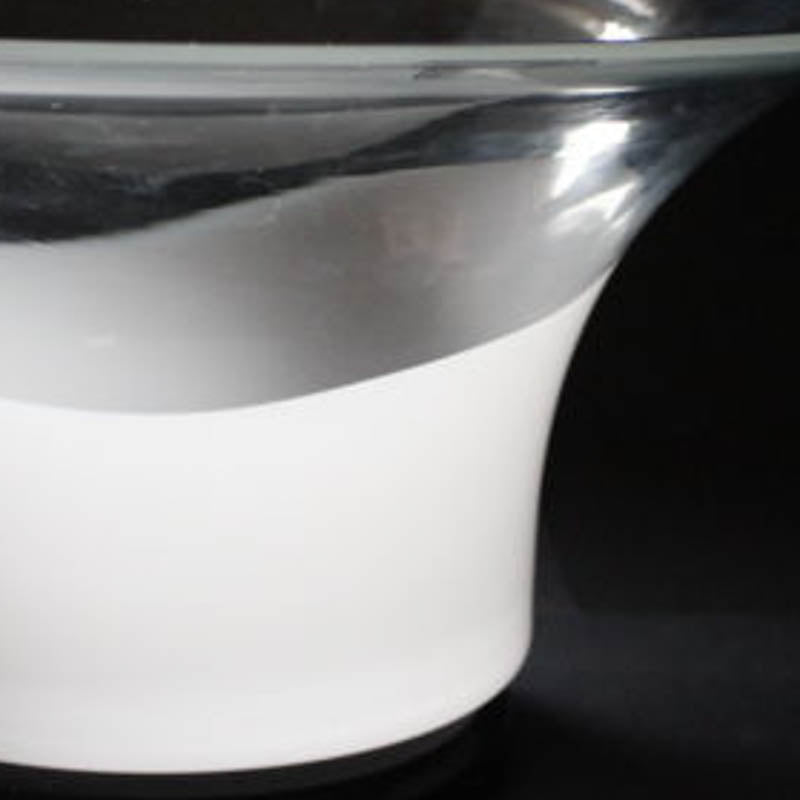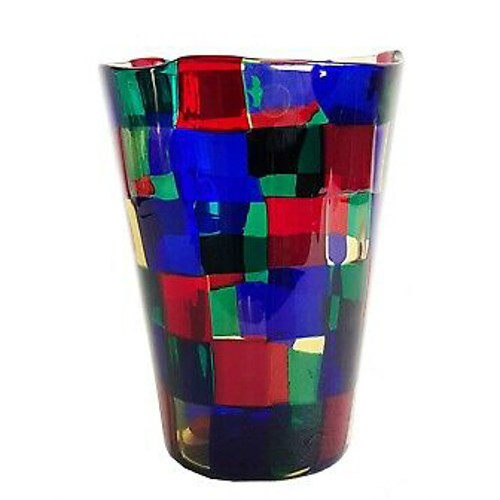This is a white milky-like glass in which the opacity is provided by the presence of microcrystals dispersed in the matrix that are separated out when the molten glass is cooled down. The crystals change the index of refraction, thus giving the glass mass a milky appearance.
The microcrystals do not absorb the light beams but reflect them, and thus determine both the opacity and the white colouring. In the Murano area they consist of calcium and sodium fluorides and they are obtained by adding fluorine compounds such as cryolite or fluorine spar, as well as zinc oxide and alumina, to the glassy mixture.
The lattimo was introduced in the XVI century for items decorated with multicoloured enamels, especially refined and rare.
It was later used as a complement to other types of process, such as the reticello. It fell into disuse in the early 20th Century, but it was given a new lease of liife in the late 20s on the part of the most important and famous Murano glass factories, such as Barovier & Toso, Venini & C. and MVM Cappellin & Co. The latter was the first to use it without the addition of other colours for a series of geometric vases exhibited at the 1927 International Exhibition of Decorative Arts in Monza.
Later, during the 50s, lattimo glass was adopted by almost all the glass furnaces on the island and attained excellent results in figures, as well as the case of the famous Commedia dell'Arte figures by Fulvio Bianconi for Venini & C.

Tomaso Buzzi. Rare Zoomorphic Lattimo Argento vase, model 3423




Leave a comment
All comments are moderated before being published.
This site is protected by hCaptcha and the hCaptcha Privacy Policy and Terms of Service apply.